5 Best Phones for Food Photography in 2022 – Latest Guide
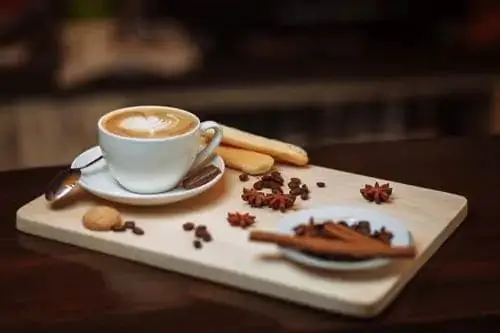
Hi there! Welcome to our website. You must be here because you love food photography, right? Food is simply the best. We need it to live and if prepared properly, it can be a great subject of photography. Nothing beats a shot of a meal that gets our tastebuds going. Therefore, we will cover the topic of the best phone for food photography. So stay with us for full information.
Food photography is really trendy right now. There are countless uses for it and you can practically see it everywhere. Taking a picture of your meal is very popular among Instagrammers. You can post it on your story or make a really cool and aesthetic feed on your profile. Basically, the only limit is your imagination.
There are also many food blogs out there and good photos are practically mandatory for them. Even if you have a recipe site you will need at least one photo of a final product. Not to mention restaurant web pages, where food photography is the main tool of advertising. So you can see just how important this type of photography is. We encounter it on daily basis.
The best thing about photography is that you don’t need a professional camera these days. All you need is a good phone. It is hard to carry a camera everywhere you go, but do you know what you always have with you? That’s right! A smartphone. And the best thing is that you can take high-quality shots with it. So check out the best phones in business that will enhance your webpage or social media profile.
If you want to read a full detailed review of our recommended phone for food photography click here. Or if you are more interested in our top budget pick we got you covered here.
DID YOU KNOW: Food in photos is often not what it appears to be. For a really professional photo, some improvements are needed. Therefore, the fruit will be colored with lipstick. Cakes are often spraypainted and ice is not ice at all, but rather a piece of plastic. Melted cheese is simmered in water and pancakes will have cardboard in the middle. So if you are tempted to dig in, please don’t.
NOTE: Below you can find a comparison table and a detailed description of the best phones for food photography.
TOP RECOMMENDED PHONES FOR food photography
| BEST AFFORDABLE | RECOMMENDED | ||||
| Samsung Galaxy S21 FE | Xiaomi 11T Pro | iPhone 13 | Samsung Galaxy S22 Ultra | Google Pixel 6 Pro | |
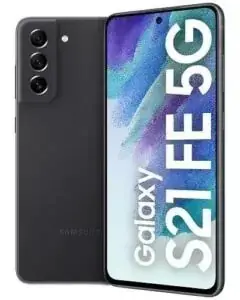 | 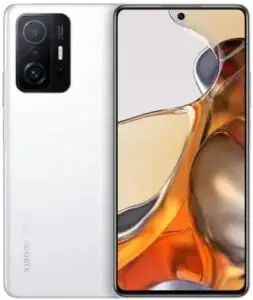 | 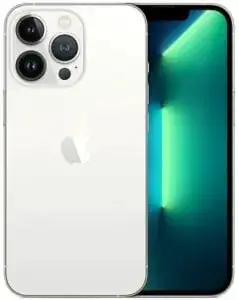 | 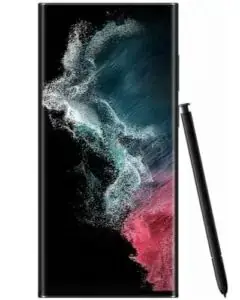 | ||
| Perfect For | Flagship performance at half the price | Flagship performance at half the price | Next level experience | Most demanding users | Photo capabilities and graphics performance |
| Display | Dynamic AMOLED 120 Hz | AMOLED 120 Hz | 6.1 ” Super Retina XDR OLED | Dynamic AMOLED 120 Hz | LTPO AMOLED 120 Hz |
| Operating System | Android 12 | Android 11, MIUI 12.5 | iOS 15 | Android 12 | Android 12 |
| Memory | Up to 256GB (8GB RAM) | Up to 256GB (12GB RAM) | Up to 512GB 4GB RAM | Up to 1TB(12GB RAM) | Up to 512GB (12GB RAM) |
| Camera | 12MP wide, 8MP telephoto, 12MP ultrawide | 108MP wide, 8MP ultrawide, 5MP telephoto macro | 12 MP | 108MP wide, 10MP periscope telephoto, 10MP telephoto, 12MP ultrawide | 50MP wide, 48MP telephoto, 12MP ultrawide |
| Battery | Li-Ion 4500 mAh | Li-Po 5000 mAh | Li-Ion 3095 mAh | Li-Po 5000 mAh | Li-Ion 5003 mAh |
| Sound | Stereo speakers | Stereo speakers | stereo speakers | Stereo speakers | Stereo speakers |
| Sensor | Fingerprint optical | Fingerprint side-mounted | Face ID | Fingerprint ultrasonic | Fingerprint optical |
| 10,793 Reviews | 187 Reviews | 250 Reviews | 232 Reviews | 316 Reviews | |
| $599.99 | $449.50 | $949.99 | $993.50 | $679.50 | |
| Buy on Amazon | Buy on Amazon | Buy on Amazon | Buy on Amazon | Buy on Amazon |
What are the best phones for food photography?
Samsung Galaxy S21 FE

| HARDWARE | 9/10 | |||
| BATTERY LIFE | 8/10 | |||
| DISPLAY | 9/10 | |||
| MEMORY | 9/10 | |||
| VALUE/PRICE | 10/10 |
| CUSTOMER REVIEWS |
Key Features
|
|
|
Detailed Review
Just like the previous fan edition, there are only a few small but subtle differences in the S21 FE. The display grows from 6.2 to 6.4 inches – and scores in the test with similarly excellent results. The OLED display offers a Full HD Plus resolution of 2340 x 1080 pixels, which results in a very good pixel density of 398 ppi – that’s easily enough for a high-resolution display. The maximum brightness is 900 candelas per square meter – also an excellent value. Together with the reasonable contrast values ​​of 150:1 (checkerboard contrast in the dark) and 48:1 (contrast in ambient light), the image content can be read very well under all lighting conditions.
We find one of the biggest differences to the original model in the camera structure of the Samsung Galaxy S21 FE 5G. Because the telephoto lens now only comes with an 8-megapixel sensor with a conventional f/2.4 aperture – instead of 64 megapixels and an f/2.0 aperture. The rest of the lenses remain unchanged.
The photo and video quality of the main lens are still at a high level. In daylight conditions, the photos of the main camera are very detailed, although the Galaxy S21 performs even better in direct comparison. Some details are also lost in low light but the quality is still very good – we criticize this at a very high level. Smartphone photo enthusiasts will definitely get their money’s worth here because the photos are great in a subjective comparison. The FE also has its strengths. For example, the Galaxy S21 FE performs better when it comes to detail and low noise.
With S21 FE you get one of the top high-end chipsets of last year – the Snapdragon 888. Needless to say, with such a chipset top performance is always guaranteed. Whether you are playing games, watching videos, or multitasking. This phone will handle anything.
With Galaxy S21 FE Samsung has done enough to list this phone as one of the best phone for food photography.
- Under-stated, attractive design
- Impressive triple rear camera
- Updates through to Android 15
- Average battery & charging
- Older tech
| LEARN MORE | OR | CHECK PRICE |
Xiaomi 11T Pro – best affordable phone for food photography

| HARDWARE | 9/10 | |||
| BATTERY LIFE | 10/10 | |||
| DISPLAY | 9/10 | |||
| MEMORY | 9/10 | |||
| VALUE/PRICE | 10/10 |
| CUSTOMER REVIEWS |
Key Features
|
|
|
Detailed Review
The Xiaomi 11T Pro is an excellent device in almost every aspect and is rightfully considered as the best phone for food photography.
Probably one of the most shocking features is the ridiculously fast 120W charging. According to Xiaomi the phone can be charged from 0 to 100 in just 17 min. Of course in reality it takes a couple of minutes longer but nevertheless, it is at the moment the fastest charging phone on the planet.
The design of Xiaomi 11T Pro looks very sleek. The performance is also impressive. After all, the smartphone is equipped with a Snapdragon 888 that will handle everyday tasks with ease. Gamers should also be satisfied with the performance of the 11T Pro. Complex 3D games are not a challenge for this smartphone.
The OLED panel has a resolution of 2,400 x 1,080 pixels – with a size of 6.7 inches, the 11T Pro has a high pixel density of 393 ppi. This means that the display shows the content beautifully sharp. We also really like the high screen refresh rate of 120 Hz, because everything scrolls smoothly across the screen.
The phone also comes with a triple camera. As with the predecessor, Xiaomi relies on a 108-megapixel sensor in the main camera. An ultra-wide-angle lens (8 megapixels) and a tele-macro lens (5 megapixels) complement the camera setup on the back. The main camera is optically stabilized and shoots videos in either 4K at 60 frames per second or in 8K resolution at 30 frames per second. The camera is top-notch. The photos look good in both daylight and low light.
- Extremely short charging time
- Outstanding performance
- High-contrast and colorful display
- IP protection and wireless charging are missing
| LEARN MORE | OR | CHECK PRICE |
iPhone 13

| HARDWARE | 10/10 | |||
| BATTERY LIFE | 9/10 | |||
| DISPLAY | 9/10 | |||
| MEMORY | 9/10 | |||
| VALUE/PRICE | 10/10 |
| CUSTOMER REVIEWS |
Key Features
|
|
|
The iPhone 13 doesn’t exactly break the mold, as it brings the same shape and design as last year’s iPhone 12, but with one striking difference. The notch cutout for the selfie cam and face id is smaller this time around. The new iPhone is slightly heavier than last year, 10 grams to be exact. The rear cameras have a different diagonal arrangement, maybe because of the larger sensor in the main camera, but at its core, this is the elegant iPhone design we’re used to. The iPhone 13 has a flat corning-made glass back, with that signature apple logo. The phone is well-balanced and easy to wield. It offers a pretty good grip because of the flat and edgy aluminum frame. The iPhone 13 brings ip68 rated water and dust resistance. Apple claims it’ll survive for half an hour under six meters of water. The screen of the iPhone 13 is similar to last year’s – it’s a 6.1 inch super retina XDR OLED, protected by a ceramic shield, some of the toughest glass there is. While this year’s iPhone 13 pro brings a fast 120HZ refresh rate, the regular model still sticks to a standard 60HZ one. There is one advantage you get here over last year, and that is the max brightness. We measured around 800 nits here with the slider, compared to around 640 nits on the iPhone 12. This means using the phone out in the sun should be even more comfortable.
CHIPSET:
iPhone 13 brings a new chipset – the latest Apple A15 Bionic – this is one of the most powerful chipsets, you can get on a phone and it provides incredible performance as well as 5G connectivity. In CPU tests the iPhone 13 tops the charts scoring up to 15 percent higher than the iPhone 12. GPU performance is a different story though, because Apple has equipped this year’s pro models with an extra powerful GPU that has 5 cores instead of 4. This means that the vanilla iPhone 13 doesn’t quite match the graphics scores of the 13 pro or pro max, but it still does a great job, as the heaviest games run smoothly even on their highest settings.
CAMERA:
The iPhone 13 has a dual-camera system, the 12-megapixel (F/1.6 Dual Pixel AF, sensor-shift OIS) main camera, and a 12-megapixel (f/2.4, 120° field of view) ultra-wide lens, just like last year. But this time around the main camera features a new sensor with larger pixels as well as sensor-shift stabilizations. Photos from the main camera are rich in detail with great contrast and low noise- The dynamic range is not super wide, but is balanced and natural and the colors are true to life.
AUDIO:
The iPhone 13 has a pair of stereo speakers one at the bottom and the other at the top. They are well balanced and loud, scoring very well on our loudness charts and the sound quality here is exceptional. As with every iPhone, there is o 3.5-millimeter jack and you need to use an apple lighting adapter to plug in traditional headphones.
BATTERY:
The iPhone 13 has a 3240 milliamp-hour battery capacity, larger than the 2815 capacity on the iPhone 12, and battery life is better here. The new model scored an 89-hour endurance rating in our tests and allows for at least three more hours of video playback or web browsing. Because of the larger battery, the charging speed is a bit slower there. With apple’s 20 watt charger we’re able to charge the iPhone 13 from 0 to 54 percent in half an hour. There’s also support for wireless charging which goes up to 15 watts if you use a MagSafe charger.
CONCLUSION:
The iPhone 13 is a great phone, one of the best on the market. You get the signature iPhone design, which is super durable and it comes with an even smaller notch. Then there’s the powerful hardware, the bright screen, superb stereo speakers, and the excellent camera experience both in the day and at night. Overall it’s worth recommending which you’d expect from the latest -iPhone, but if you have an iPhone 12 already the differences here are too small to be worth an upgrade, and keep in mind that you don’t get a 120hz refresh rate autofocus on the ultra-wide or a zoom camera unless you go for one of the pro models.
- Very good chipset.
- Great battery life.
- Amazing value for the price you pay
- Pricey
| LEARN MORE | OR | CHECK PRICE |
Samsung Galaxy S22 Ultra – best phone for food photography

| HARDWARE | 10/10 | |||
| BATTERY LIFE | 10/10 | |||
| DISPLAY | 10/10 | |||
| MEMORY | 10/10 | |||
| VALUE/PRICE | 9/10 |
| CUSTOMER REVIEWS |
Key Features
|
|
|
Detailed Review
Samsung Galaxy S22 is for sure one of the best phone for food photography.
The 6.8 inches dynamic AMOLED display is simply outstanding. It is actually the maximum size for a smartphone. Because the long sides are gently curved, the display appears borderless when viewed from the front. The resolution is extra fine at 3088 x 1440 pixels, as is the display quality.
While Qualcomm’s top SoC Snapdragon 8 Gen 1 from 2022 is installed in the USA, Samsung’s own production Exynos 2200 is used in the models sold in Europe. For the first time, it relies on an RDNA2 graphics architecture from AMD. The GPU, called Xclipse, supports hardware-accelerated ray tracing, which hasn’t been seen on smartphones before either. According to Samsung, “mobile gaming at console level” is possible.
What sounds promising looks different in reality: In synthetic benchmarks, the S22 Ultra is clearly above its predecessor, but it doesn’t come close to an iPhone 13 Pro. The S22 Ultra with a Qualcomm SoC also achieves better values, especially in graphics-heavy benchmarks. But all benchmarks aside the phone with both chip versions is a powerhouse and you will never experience any lagging even with the most demanding games.
The S22 Ultra is the Swiss Army knife for photographers – you always have the right tool at hand. But as is often the case with a universal tool: it is not perfect. The main camera pleases with excellent (108 megapixels) or very good (12 megapixels) image quality in brightness, and also performs excellently in low light. The telephoto modules impress with optimal light and complement each other perfectly. And finally the super-wide-angle module: very solid even in low light conditions.
Whether you are considering this phone for its cameras of performance, you won’t be disappointed in any case.
- Faster S Pen built-in
- Super bright display
- Cameras offer better low light performance
- Faster 45W charging
- Pricey
- Shorter battery life than S21 Ultra
| LEARN MORE | OR | CHECK PRICE |
Google Pixel 6 Pro
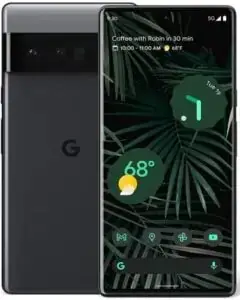
| HARDWARE | 9/10 | |||
| BATTERY LIFE | 8/10 | |||
| DISPLAY | 10/10 | |||
| MEMORY | 10/10 | |||
| VALUE/PRICE | 9/10 |
| CUSTOMER REVIEWS |
Key Features
|
|
|
Detailed Review
Google Pixel 6 Pro is a genuine Android flagship that for sure needs to be on the list of best phone for food photography. You immediately notice the high-quality workmanship and the new interesting design.
The 6.7-inch display of the Pixel 6 Pro is covered by Gorilla Glass Victus, which merges flat into a matt aluminum frame at the edges. The QHD-Plus resolution of 3,120 x 1,440 pixels results in a pixel density of a razor-sharp 512 ppi. The AMOLED display also impresses with a maximum brightness of 932 candelas per square meter and strong contrast values.
With a refresh rate of up to 120 Hertz, Google confidently rounds off the overall impression of the display. The Pixel 6 Pro is very smooth to browse and play when you need it.
Like the Pixel 6, the Pixel 6 Pro is said to capture up to 150 percent more light thanks to the significantly larger image sensor compared to the Pixel 5, which should be particularly noticeable when taking photos in low-light conditions. The wide-angle camera is optically stabilized.
The software optimization is very sophisticated also thanks to the Tensor chipset. The Pixel 6 Pro takes photos under almost all conditions – and is better than with most top smartphones.
Regarding performance the phone also delivers. Despite Tensor being less powerful than the latest Snapdragon or A15 Bionic it still handles everyday tasks and even demanding games with ease.
- Incredible cameras
- Tensor chipset performs well
- We find the new design appealing
- It takes a bit long to full charge
| LEARN MORE | OR | CHECK PRICE |
Additional hardware information
Cameras
Phones these days feature multiple-camera setups. In fact, it is very difficult to find a phone with just one camera. Usually, they have at least two in the back and some even feature four. Now there is a logical explanation behind all this. The companies aren’t just stacking cameras left and right. Each camera is different and serves its own purpose. This is how we get the best results and enhance our photography experience. The most common camera types you will find are wide camera, ultrawide camera, telephoto camera, macro camera and ToF sensor.
Wide camera – It is also known as the main camera that we find on the rear side of the phone. You will notice differences in Megapixels that a certain camera has. A good main camera should have at least 12MP. Furthermore, it is also good if it has good autofocus and an optical image stabilizer, also known as OIS.
Ultrawide camera – It offers a wider field of view than the main camera. This way you can capture more into the image and it is more similar to what our eyes see. It can offer a great advantage when taking wider images such as family reunion photos for example. However, sometimes a photo can appear curved due to a wider angle and some objects might appear abnormally shaped.
Telephoto camera – It is normally used for zoomed-in shots that are taken from a distance. You can zoom in on a scene or subject and get closer without actually having to move. This can serve us well when we don’t want to approach the subject. A telephoto lens increases focal length. It brings objects closer to you.
Macro camera – It is used for close-up shots. We can capture images of small objects, such as insects or plants. These objects can appear big in a photo and we can capture a lot of detail. In fact, we can capture things that are too small to be visible to the naked eye.
ToF sensor – It is a piece of equipment that most flagship phones these days have. A ToF sensor can help you determine the distance between the camera and the object. It is actually a depth sensor that helps the phone create a three-dimensional map of the world. It uses infrared light to determine the distance between the objects and maps 3D space.
Dynamic range
The understanding of dynamic range can really help us improve our photos. Dynamic range describes the ratio between the maximum and minimum light intensities. In simple words, it tells us the difference between the lightest and darkest tones in an image. Each device has its own dynamic range, which affects the output – that is our image. The wide the dynamic range, the better. You will stumble across this topic a lot in photography. So just remember that a wider dynamic range gives you better results. A wide dynamic range will allow you to capture more detail in brighter or darker areas. Otherwise, those areas will just appear very bright, nearly white or very dark, nearly black. So to create a good exposure, there must not be too bright or too dim parts.
An interesting fact is that human sight has a relatively high dynamic range. No camera can match it. Therefore some pictures of sunsets for example appear different than they are in real life.
Sharpness
Sharpness in photography stands for the overall clarity of the image. This combines focus and contrast. The subject must be clear, lifelike, and have a lot of details. This is when we can speak of sharpness.
Sharpness is very important in photography. Better sharpness means more detail. Furthermore, it also emphasizes the textures of the subject. You should always try and make your photos as sharp as you can. This way the images will appear more professional and interesting for the viewers.
For the best results, you will have to have good equipment as well as the right technique and well-developed skills. However, with the right gear, it can be much simpler. It is also important to know that sharpness is related to the resolution, as the number of pixels and their size affect overall sharpness.
Resolution
The image resolution relates to the number of pixels that are featured in an image. Higher resolutions simply mean that there are more pixels in the photo, whether lower resolutions mean that there are fewer pixels in a photo. The number of pixels also determines how much information is captured in an image. Or in other words, how much detail it can hold. So, the more the better, as it usually results in higher quality photos.
Changing the resolution, you are basically saying how many pixels you want to have per square inch. So it is always good to have a little more than less. After all, it affects the sharpness of the image as well, and you don’t want blurry photos. You want to capture as much information as you can. Cropping the photo, while keeping the same resolution will significantly drop the quality of the photo. That happens because you remove a certain amount of pixels, which basically means you lose a certain amount of information that should occupy that space. So avoid doing that.
There is a lot of talk about Full HD resolution these days. Here we have 1920 pixels wide and 1080 pixels high image. Such resolution is very common among televisions these days. However, there is also Ultra HD, which is also known as 4K. This means that the resolution here is about 4000 pixels, although is usually a bit less – 3840 pixels.
Contrast
Contrast represents a visual ratio between different tones in an image. It defines color characteristics and affects areas such as highlights, shadows, colors, clarity, and textures. A simple way of putting it is to say that contrast is the scale of difference between black and white in the photo. High contrast means that there will be bright highlights and dark shadows, whether low contrast images have little difference between light and dark tones.
We also know different types of contrasts. There is Tonal contrast, which refers to dark and bright areas in the photo. Then we have Color contrast which means pairing warm and cold colors to make them stand out more. We also know Conceptual contrast, which helps us add depth and encourages viewers to engage with the photo. Then there’s also Texture contrast, where we combine rough and soft elements for an extra punch. All of the contrasts are very important if we want the image to look professional and appealing. So we must know how to use them if we want to achieve that magical result. They can help us tell a story and make certain things stand out more. So we can really be artistic with the contrast.
Best phone for product photography – CONCLUSION
As you have learned choosing the best phone for product photography is not a trivial task. The phone cannot compare to a professional DSLR camera with its small sensor size. Therefore, it is important that the sensor quality is at the top level and you will also need to play with some manual camera settings, as standard auto mode usually won’t cut it.
Any phone from our list will give you the best camera experience. So if you stay within our selection of best phones for product photography you are good and ready to go. Have fun taking photos.